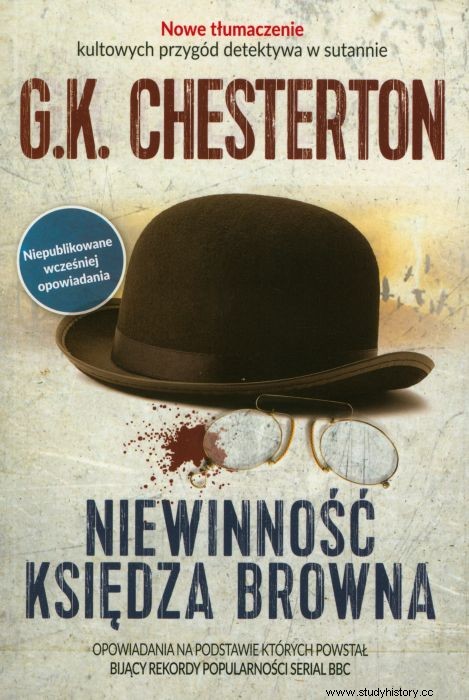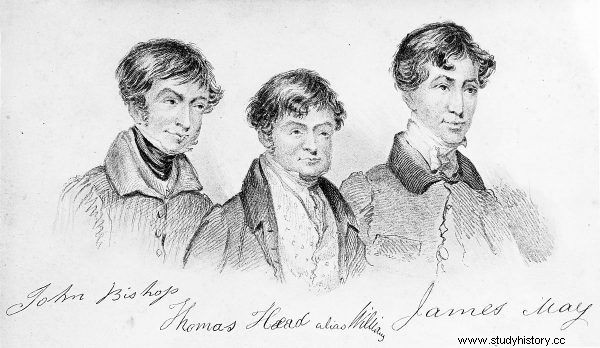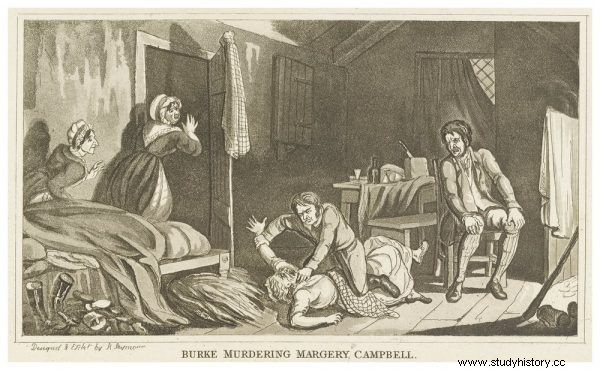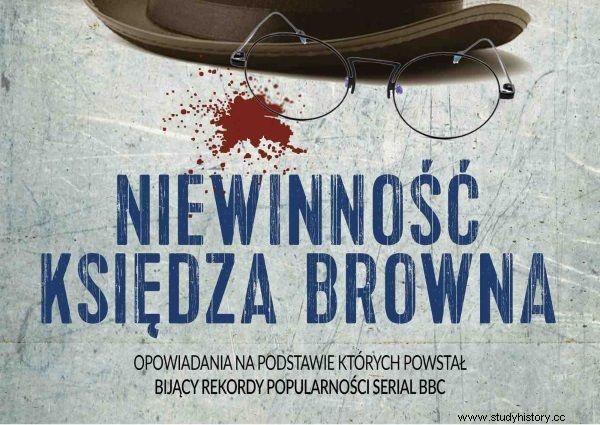A tenement house murdering its own tenants. A gang of heartless killers intoxicating victims with opium, restraining them and throwing them into city wells. And a woman who killed up to ... four hundred people in two decades. Were any of them a serial killer?
It is not uncommon for laws to prevent indecency and misdemeanors only fueling the cycle of crime. This was the case in Great Britain, where, until the 1830s, it was strictly forbidden to perform an autopsy on any deceased except for murderers who had been sentenced to death. As a result, the medical community constantly complained about the lack of corpses needed to train new adepts of medicine, to conduct research and for any anatomical discoveries.
Scientists, resentful of the unequal treatment (after all, in other countries it was allowed to cut any anonymous bodies for which no one volunteered!), Resorted to clandestine or even criminal methods. As Sanjib K. Ghosh emphasizes in Human cadaveric dissection. A historical account , "Cases of grave robbing, kidnapping, and even murdering for autopsy material, have become alarmingly frequent."

The William Burke House in Edinburgh.
Corpse snatchers who refused to wait
It was against this background that two agile Irish people who settled in Edinburgh developed their activities. In 1828, William Burke and William Hare killed a total of sixteen men and women, then sold their remains to Robert Knox, one of the most influential anatomy specialists in the country. Knox conducted autopsies twice a day. As many as four hundred adepts of medicine and the curious attracted to them each time, the doctor constantly needed new bodies. William Hare, meanwhile, was a landlord and his series of killings - in which his friend William Burke assisted - began with a tenant of the house weakened by illness.
Burke and Hare used to get their victims drunk and then strangle them when they were too confused to resist. The method was hailed by the press as "burking", after one of the perpetrators. The murderers were not caught until ten months later, when they were accidentally found ... not yet in their turn to die, Burke's tenants.

A pre-war crime story in a great setting. We recommend "The Innocence of Father Brown" G.K. Chesterton (Fronda 2017).
The tenement house was sentenced to death. He was executed on January 28, 1829, and his body ... was given to science. The body was dissected, and Burke's skeleton is still on display at the Anatomy Museum of the Medical School in Edinburgh. All the boulevards were excited to write about the murder's grim fate, but they failed to scare away the potential followers of the Irish duo. Burking quickly gained popularity not only in Scotland but also in the heart of Great Britain.
Followers of bloody practice
In London, an entire gang known as the "London Burkers" - again forged after the loudest of the corpse suppliers - began to operate. Burkers offered their homeless and emaciated victims a place to stay, and then dazed them with rum and opium tincture. Half-conscious unfortunates, tied to a rope, were thrown into a well to drown themselves.
There were at least three victims. Gang leaders John Bishop and Thomas Williams were hanged on December 5, 1831, and thirty thousand Londoners watched their execution. On the same day, the bodies were handed over to the surgeons running the so-called Anatomy Theater on Windmill Street. So that the crowds eager for vengeance can still enjoy them.

London Burkeys. Three gang members on a 19th-century lithograph.
A new mother to children
The harvest that the burkeepers - both the first ones in Edinburgh and all their followers - have gathered - still disappear against the background of the criminal achievements of Amelia Dyer. She was one of the so-called angel manufacturers. Women accepting unwanted children for their upbringing and making efforts to ensure that they live as soon as possible (we wrote more about them in our other article) . The less calculating factory owners limited themselves to starving and neglecting their charges. At first, Amelia did the same, but gradually she moved from indifference and sadism to crime.
Dyer, who lives in Bristol, advertised in the press, offering that she would adopt any child for £ 10, taking the shame of an extra-marital pregnancy out of this or that unfortunate woman. She then choked the babies with white tape, wrapped their bodies in brown wrapping paper and tossed them into the River Thames.
It operated, on and off, for two decades. When she was finally caught, she confessed to only one murder. The testimonies of the witnesses, the inquiries of the mothers who left her children in her care, and the traces found in Dyer's house, indicated an incomparably greater number of victims: from several dozen to even several hundred. The criminal was hanged on June 10, 1896.

One of the William Burke murders, as imagined by the press.
The essence of the crime
Authors of articles on the Bristol criminal often refer to her as one of the greatest serial killers in history. Psychology and criminology specialists, however, have doubts ... whether Amelia Dyer was a serial killer at all. They are equally cautious about classifying the acts of William Burke, William Hare, John Bishop and Thomas Williams.
The problem is how we actually understand the concept of a serial killer. According to the French professor of modern history, Philippe Chassaigne, this term should only be applied to criminals who meet at least one of three conditions:
- They are fixated on only one victim type;
- There is a sexual element to their crime;
- Their actions are accompanied by sadistic rituals.
These points can be applied to classic serial killers who kill to satisfy their sick desires and vent their indomitable obsessions. But what about the criminals who acted not for obnoxious excitement, but for pure profit? Pieter Spierenburg, Dutch professor of the history of criminology, argues that these degenerates should not be called serial killers, but:multiple murderers.
If we take his nomenclature, it turns out that only one known serial killer was on the prowl in Victorian Britain. The infamous Jack the Ripper from Whitechapel, London.
Victorian crime fiction at its best:

